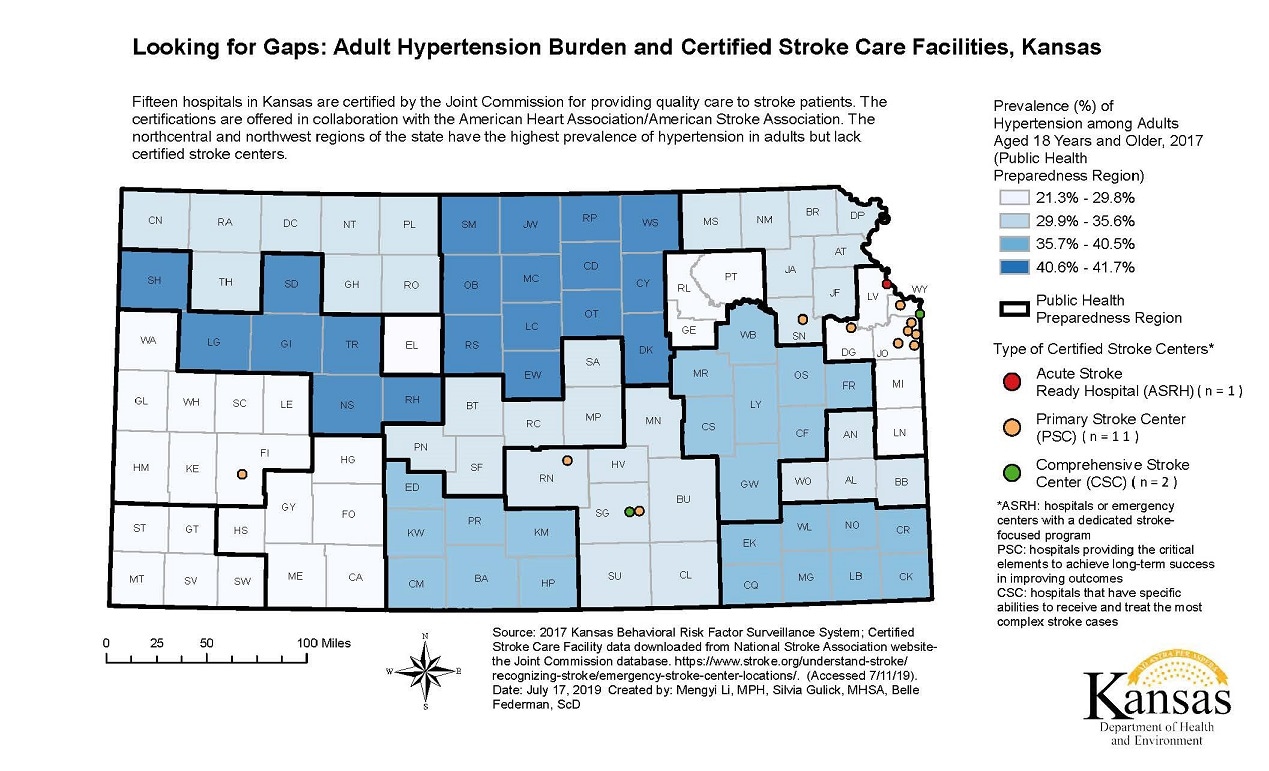Key points
Data sources
This map allows readers to understand the geographic distribution of the burden of hypertension in Kansas. This map also demonstrates the gap in access to high quality stroke care between rural and urban populations. All of the certified stroke centers are in major cities in Kansas; none are in the northcentral and northwest regions where the high prevalence of hypertension indicates a larger percentage of people at higher risk for developing a stroke. Preventative care through management of hypertension should also become a focus especially in areas with high burden and a lack of access to quality care for stroke patients.
ArcGIS
2017 Kansas Behavioral Risk Factor Surveillance System (KS BRFSS). Certified Stroke Care Facility data downloaded from National Stroke Association website-The Joint Commission database. Available at: https://www.stroke.org/understand-stroke/recognizing-stroke/emergency-stroke-center-locations/. (Accessed 7/11/19).
This choropleth map displays the region-level prevalence of hypertension among adults aged 18 years and older based on the 2017 Kansas BRFSS. Regions were defined as the 16 Public Health Preparedness Regions. The prevalence of hypertension was divided into quartiles. Locations of Joint Commission certified stroke centers were retrieved from the National Stroke Association website and geocoded using ArcGIS Pro 911 Composite. The stroke centers were classified into three categories based on the type of certification, ranking from least demanding to most demanding: Acute Stroke Ready Hospital (ASRH), Primary Stroke Center (PSC) and Comprehensive Stroke Center (CSC). An ASRH is a hospital with a dedicated stroke focused program. A PSC is a hospital providing critical elements to achieve long-term success in improving stroke outcomes. A CSC is a hospital that can receive and treat the most complex stroke cases.
Mengyi Li, MPH; Silvia Gulick, MHSA; Belle Federman, ScD, Kansas Department of Health and Environment
Mengyi Li, MPH; Silvia Gulick, MHSA; Belle Federman, ScD, Kansas Department of Health and Environment. Accessed from the Centers for Disease Control and Prevention's Chronic Disease Map Gallery.

